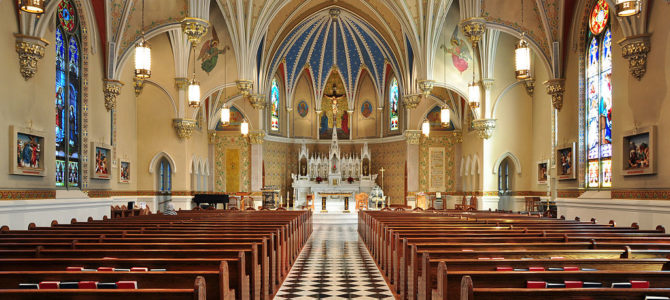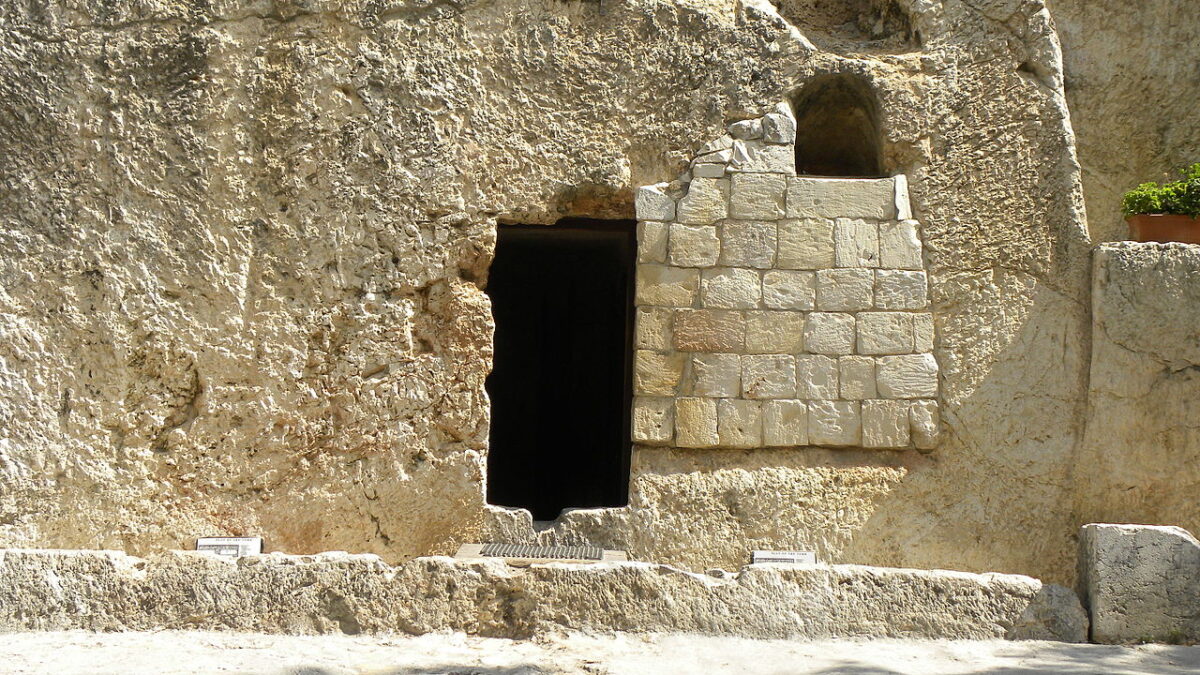
The central theological battle of the Reformation was the doctrine of justification. The question was basic: How are we saved? For the reformers, justification was an objective event: the sinner is declared righteous on account of Christ’s work and stands righteous before God through Christ. The only subjective contribution is passive, receptive faith.
Christ’s incarnation drives this extra nos (external, objective, “outside of us”) aspect of justification. Just as flesh avails God to us extra nos in the person of Christ—such that a leper who needed healing went to something outside himself contoured by a flesh and blood body (Christ)—so also in Christ’s mystical body, the church, is salvation contoured in those extra nos gifts founding the church: the sacraments and preached word.
Grace in this context is sheer gift. The incarnation guides this aspect of grace as well. If Christ is extra nos, contoured by a body distinct from me, I know where Christ ends and I begin. He alone is holy; I am a sinner needing mercy. He gives; I receive. Whatever Christ has, I possess by sheer gift. My posture is passive, like Mary responding to Gabriel’s promise, “Let it be to me according to your word.”
The Roman Catholic position, argued the Protestants, ratified monasticism’s optimism about what man could do to cooperate with God in his salvation. The issue goes back to Augustine’s battle with Alexandrian theology and its heirs in the monastic movement, typified by Augustine’s nemesis, fourth-century British monk Pelagius. Monasticism tends toward mysticism and extreme asceticism, both of which suggest optimism about what man can contribute toward his salvation. The protestors accused Rome of semi-Pelagianism.
The “semi” is because Roman Catholic theology also centers on grace, but sees grace as a substance working renewal in the justified person. If Reformation doctrine emphasizes Christ as an extra nos savior saving the incapacitated sinner by sheer gift, the Roman Catholic position emphasizes Christ as an example to follow, guiding the grace-infused sinner so he can contribute to salvation by “faith working through love.”
The irony is, in worship the Roman Catholic Church lives out what is described above as the Reformation position. Meanwhile, many of the heirs of the Reformation could not worship more out of line with the Reformation doctrine of justification. Let’s flesh this out.
How Liturgical Worship Arises from Justification
The Roman Catholic Church will never dispense with the Mass. It can’t. Mass is the historical liturgical service centered in the Eucharist. Confirmed that Christ is bodily present in holy communion, no Roman Catholic goes through a week without invitation to that mystery of the incarnation. Christ is present in church not as some spiritual energy possessing the souls of individuals through the shamanistic skills of a good preacher, but in his flesh and blood presence in the sacrament. He’s a gift external to the suppliant. Christ and suppliant are distinct, and the Mass works communion between the two.
Christ’s bodily presence in worship compels particular elements of the liturgy. If Christ sits at the right hand of the Father but is bodily present at the altar, then the right hand of the Father is at the altar. Heaven is on earth. A cloud of saints and angels mystically gathers at the altar.
So, if these angels celebrate the return of sinners to Christ (Luke 15:10), then a truly biblical worship would partake in whatever the angels are singing in heaven. We get two examples of what they’re eternally singing in the Bible, the “Holy, Holy, Holy” (Sanctus) and the “Gloria in Excelsis,” both of which appear in the liturgy. These elements testify that we stand righteous before God in heaven. Or consider the Kyrie (the “Lord, have mercy”). If we are in Christ’s bodily presence like a leper in Jesus’ day, we can’t do better than to utter the prayer Jesus declared to be “great faith,” which had a happy ending every time it was uttered.
Finally, consider how incense testifies to the real presence of a resurrected body buried in spices. As the smell of spices would announce the bodily presence of him who spent three days immersed in them, so does that same smell announce the presence of that same body in church today. Couple this with the idea that our prayers ascend like incense to the Father through the one that smells like spices, and you get a thousand diamond refractions’ worth of beautiful theology going on as the incense embraces the congregation.
We could go on and on with all the elements of the liturgy, but here’s the point: this liturgical picture exactly portrays the Reformation doctrine of justification. Sinners are brought into the presence of God, beseech his mercy, and by declaration (absolution) and imputation of Christ’s righteousness in the sacraments, they stand righteous before the throne of God, evidenced by the heavenly banquet they enjoy in his presence with all the angels. It’s all quite literal and objective, because the formal elements of the historic liturgy testify to literal and objective things, namely, our justification before God in Christ.
Formal Worship from a Formal Savior
There’s something else to consider going back to that extra nos nature of Christ’s gifts. Liturgical worship is formal worship. It’s formal because Christ himself is a “formal” savior, having taken “the form of a servant,” and being formally present in the church. He’s not some abstracted psychic energy or archetype, as the Gnostics taught.
The formal elements of worship, rooted as they are in the gospel, remind us that the faith of the church is really the faith of Christ established extra nos. The faith of the church is distinct from me, yet it calls me to partake. Again, there’s no fuzzy line where Christ ends and I begin. Christ’s faith is put on my lips extra nos, from a formal and external worship. It’s not conjured up by my faculties of emotion, intelligence, or will, although it certainly triggers reactions in these human faculties.
The “Our Father” is illustrative. It powerfully states the Christian faith. We can only pray “Our Father” through the only-begotten Son who became man, for only this man has reclaimed that holy status in the image of God lost by Adam. Christ alone is holy, says the liturgy itself, and only through him are we worthy to stand in God’s presence and call him “Father.”
Christ has wrapped us in his humanity, imputing his righteousness to us through baptism and communion as a gift of our justification. Crying out “Abba Father” or “Our Father” is a true working of the Holy Spirit, working in us Christ’s status as God’s only-begotten Son, so that what he has by nature, we have by the grace of adoption.
The point is, we don’t do the “Our Father.” The “Our Father” does us! The Holy Spirit is working Christ’s faithful obedience as God’s Son in us. We ourselves may be tuning in and out of the prayer, going through the typical ups and downs of faith, but Christ is forever lodged at God’s right hand in perfect righteousness and holiness, grounding our own faith in his perfect faith. This is the glory of externalizing, and therefore formalizing, the elements of the liturgy. They don’t count on my human faculties to make them effective, but refer the operation of my faith to Christ and the Holy Spirit.
The seed analogy is helpful. A seed is external and distinct from the soil it’s planted in, but its entire mission is to, along with water, draw from inert soil and work it into living material. The soil contributes nothing, but is purely acted upon. There’s a reason Jesus uses the seed analogy more than any other to show how the kingdom of God works. Christ is the seed working through the liturgy. The water is baptism. We are the soil being shaped into the new man in a purely passive process.
The liturgy is like the bed the four men used to carry the lame man to Jesus. Jesus saw “their” faith and absolved the lame man. Similarly, through the liturgy of the church, my lameness is often carried through to Jesus by the church’s prayer, and on account of “their faith,” I am brought to a place where I too am absolved. This, by the way, is why infant baptism is easy to understand in liturgical churches and ultimately why it’s a non-negotiable for any non-Gnostic understanding of Christ and faith.
How Things Got Off Track
The Lutheran reformers declared, “the Mass is retained among us, and celebrated with the highest reverence.” They repeatedly affirmed their desire to continue the catholic traditions of worship, minus elements they believed corrupted it. Other Reformation churches followed suit to varying degrees. But several decades ago, it became fashionable in Protestant churches to gut the liturgy or dump it altogether.
Typically the first things to go were the angelic canticles. Congregations decided—through majority vote? Because the pastor felt God told him to? Because the worship team heard a cooler song on K-Love?—to veil the reality of our justification before God, that we stand before God surrounded by angels and their eternal song.
One by one, all the elements of the historic liturgy got dumped or replaced by cheesy substitutes, all of them snuffing out the existential reality of salvation, that we stand before God in the righteousness of Christ. This undermined the Reformation doctrine of justification. Protestant churches will claim a doctrinally correct view of justification—you can find it on their “What we believe” page at their website—but what the doctrine means has no bearing on their worship practices.
Unwittingly, Reformation churches were adopting the worship practices of the Radical Reformation, a millenarian movement predating the Reformation but piggybacking on it. The millenarians believed history was moving beyond the “Age of the Son” with its extra nos focus on church, ministry, and sacraments into a new “Age of the Spirit.” In this new age, the Spirit of God works not through a church, but more organically, in cooperation with man, resulting in purity, works of love, and establishing the kingdom of God on earth.
This move from the external and formal to the internal and informal has implications for worship. In formal worship, the impulse is away from my incapacitated self toward biblically framed formal elements defining communion with Christ. In informal worship, the impulse is from inspiring music and rhetorical manipulation toward moral action, therapeutic frisson, or political activism. Completely disconnected from any formal qualities, worship becomes purposely—philosophically, even—informal, testifying to the “outside of the box” ways in which the Spirit may work on any given individual. Again, as the millenarians taught us, we’ve moved to a freer age of the Spirit, a “spiritual but not religious” age.
Say what you want about this sort of worship, it’s popular and effective for the ends it seeks, precisely because it allows for whatever it takes to move people to action. This “whatever it takes” segues nicely into that art of human manipulation: marketing. Marketing is crafty enough to realize you have to rarefy social trends and reconstitute them in the products you sell. Such alchemy will guarantee the widest market and appeal at a gut level.
Protestant churches gobbled up the esoteric wisdom of marketing gurus in the 1980s, convinced their “church growth” business principles were precisely the “paradigm shift” needed to divert losses in the church. The problem was, that “paradigm shift” was a distinct move away from the historic understanding of the incarnation and justification. Meanwhile it embraced Gnostic spirituality, a spirituality rooted more in images and phantasms of a personalized Christ, constituted from the deconstructed fragments of my yearning, consuming self, shaped in the recesses of my inner self through the manipulations of emotive music and crafty dramaturgy.
This has resulted in several crises in Protestantism: loss of membership, odd upstart movements like the Emergent Church movement, and a loss of identity vis a vis politics (if your program is to establish the kingdom of God in America, you rapidly become a political progressive).
Why Non-liturgical Worship Leads to Progressive Politics
Moving from formal to informal worship has political implications. Paul Kleppnor’s book, “The Cross of Culture” (1970) provides a crucial data piece explaining how Pietism, Puritanism, and Hegelianism led to modern American progressivism. Surprisingly, he argues, it all boiled down to two worship orientations in the crucible of nineteenth-century American politics: a ritualistic one and a pietistic one (his words). The latter laid the foundation for the rise of American progressivism.
On the ritualistic side were German and Irish immigrants—Lutherans and Catholics—who tended toward the Democratic Party, in part because it left them alone to practice their religion as they wanted. On the pietistic side were native-born Republicans, more aligned to millenarian, revivalistic theology, who believed it their Christian calling to impose holiness laws and their vision of Americanism—the new Israel, the kingdom of God on earth—on the ritualistic immigrants. (This is why to this day parochial schools tend to be Lutheran or Catholic; U.S. public schools were at first tools of Puritans and revivalists to impose their millenarian agenda. Some things never change.)
Why would divergent worship practices—formal versus informal—lead to divergent attitudes toward political involvement? It all goes back to the Reformation doctrine of justification. If Christ is extra nos, as he is in the liturgy, then he’s imputed on me as a gift from the outside. There’s no expectation I’ll be transformed into the likeness of God. I can’t. This is Christ’s show, and I remain distinct from him.
Also, recognizing my own incapacitation, I’ll never think humanity can be mustered to the cause of positive governance. If anything, government needs negative checks, as does human nature. No establishment of the kingdom of God on earth for a ritualist!
However, if God “leaks” out of Christ and the sacramental life of the church into me, I can imagine myself as the sacrament, as God’s incarnated presence effecting change in the world through my cooperation with God’s Spirit. I’ll believe God’s using me to establish his kingdom on earth. These are the theological roots undergirding the political religion that is modern leftism.
Where to Go from Here
The solution is to restore the Reformation doctrine of justification and live out the implications of that doctrine in worship. This means reestablishing the historical liturgical forms. Non-liturgical worship, like Radical Reformation theology, puts a demand on the self that is, quite frankly, exhausting. Liturgical worship, because it surrenders faith from self to something outside of me, is a break from the exhaustion.
Perry Miller brilliantly remarked that Puritanism took people off the treadmill of indulgences but put them on the iron couch of introspection. The historic doctrine of justification was not only the antidote to indulgences, but can also be an antidote to the tyranny of self today in the American culture begot by Puritanism and later by Hegelian Pietism, whose heirs in the modern leftist religion have been dealing with the frustrating paradoxes of their own idolization of self. A proper embrace of historic worship, which so beautifully acts out the doctrine of justification, is where the healing begins. Why? Because Christ is where the healing begins.
If Protestantism is to retain its central defining doctrinal characteristic, the justification of the believer, they will need to learn something from the Roman Catholics, and reestablish the Mass in its rightful spot along with all the other historic Christian confessions. Otherwise, its 500th anniversary this October 31, I fear, will be a one and done.









